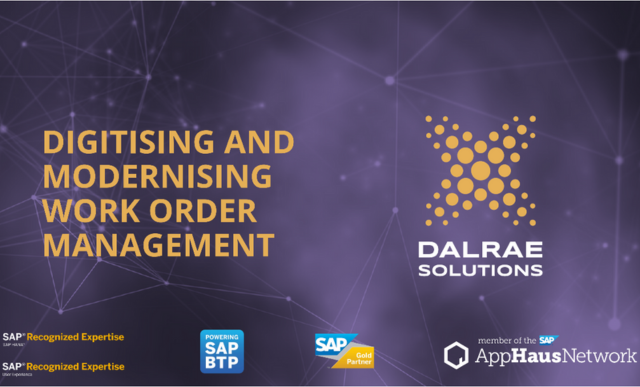SAP M&A: Challenges and Solutions for IT and Business Alignment
In today’s dynamic business landscape, Mergers & Acquisitions (M&A) have become common strategies for companies looking to expand, diversify, or strengthen their market positions.
However, when organizations involved in M&A are reliant on SAP for their IT infrastructure and business processes, aligning IT and business becomes a critical challenge.
In this article, we will explore the challenges faced during SAP M&A and propose solutions to achieve effective IT and business alignment.
Nonetheless, before we discuss that, let us first learn about why most people go for SAP when it comes to proceeding with an M&A procedure.
The Benefits of Using SAP for an M&A Procedure
Using SAP (Systems, Applications, and Products) in M&A (Mergers and Acquisitions) offers several benefits that can contribute to the success of the integration process and the overall performance of the merged entity. Some of the key advantages include:
1: Streamlined Integration Process
SAP provides a standardized platform for various business processes, including finance, human resources, procurement, and supply chain management.
When both companies involved in the M&A are already using SAP or decide to adopt it as the unified ERP system, the integration process becomes more straightforward and efficient.
A common SAP infrastructure allows for easier data mapping, process harmonization, and overall IT alignment in a much more efficient environment.
2: Data Consistency and Accuracy
SAP’s centralized database ensures data consistency across different modules and departments. During M&A, data integration is a critical challenge, and SAP’s data management capabilities help in harmonizing data from disparate systems. The unified data foundation reduces the risk of data inconsistencies, duplicate entries, and improves overall data accuracy.
3: Real Time Reporting and Analytics
SAP’s robust reporting and analytics capabilities enable better decision-making during the M&A process and beyond. With access to real-time data and insights, stakeholders can assess the performance of the combined entity, identify areas for improvement, and make informed strategic choices to achieve business objectives.
4: Efficient resource management
SAP’s integrated platform allows for better resource management post-M&A. Companies can optimize their workforce, assets, and inventory more effectively, leading to cost savings and improved operational efficiency. This optimization is particularly beneficial when the M&A aims to achieve synergies and economies of scale.
5: Accelerated Process Standardization
By leveraging SAP’s pre-configured best practices and templates, companies can expedite the standardization of business processes across the merged entity. This harmonization leads to reduced duplication of efforts, streamlined workflows, and a smoother operational environment.
6: Support for Global Operations
SAP is designed to support complex and multinational business structures. For M&A deals with international components, SAP’s multi-country, multi-currency, and multi-language capabilities can help in accommodating diverse operational requirements and regulatory compliance.
7: Enhanced Customer Experience
A unified SAP system can contribute to a more consistent and seamless customer experience. From order processing to customer support, a centralized SAP infrastructure ensures smoother interactions with customers, leading to increased satisfaction and loyalty.
8: Change management and training
SAP provides comprehensive training resources and documentation for users. During the M&A integration, employees from both companies can undergo training to familiarize themselves with the unified SAP system and new processes. This aids in change management and reduces resistance to the integration.
9: Future Scalability and Flexibility
SAP’s modular structure and continuous updates ensure that the merged entity can adapt to changing business requirements and scale its operations as needed. This flexibility is essential, especially during the transitional phase post-M&A.
10: Compliance and Security
SAP adheres to stringent data security and compliance standards. By implementing SAP in the merged entity, companies can enhance their data protection measures and meet regulatory requirements more effectively.
Challenges in SAP M&A
When it comes to performing a merger and acquisition-related task, it’s definitely ideal to use a comprehensive system like SAP. However, there are some challenges that you might have to deal with while you are at it. Let’s keep reading to know more about them.
1. Disparate IT landscapes
One of the significant challenges during SAP M&A is the presence of disparate IT landscapes in the merging companies.
Each organization may have customized their SAP systems to suit their unique business processes, resulting in varying configurations, data models, and integration points.
Aligning these diverse landscapes can be a daunting task, as it requires a comprehensive understanding of both technical and business aspects.
2. Data Harmonization and Cleansing
Data plays a crucial role in SAP systems, and during M&A, integrating data from different sources becomes complex.
Inconsistent data formats, duplicate entries, and data quality issues can arise, leading to inaccurate reporting and decision-making processes.
Harmonizing and cleansing data across merged SAP systems is essential for achieving a unified and reliable data foundation.
3. Business Process Standardization
In a merger or acquisition, business process standardization is often overlooked, leading to operational inefficiencies.
Each company may have their own unique workflows and procedures, which might conflict with each other post-M&A.
Harmonizing and standardizing business processes across the combined entity can be challenging, but it is vital to achieve synergy and streamline operations.
Solutions for IT and Business Alignment
So, at this point, we think you have some clarity about the challenges you probably are going to encounter with SAP M&A. So, in this section, we’ll tell you about how you can solve them too.
Let’s begin, then.
1. Comprehensive IT Due Diligence
Conducting a thorough IT due diligence is the first step towards successful SAP M&A. This process involves evaluating –
- The technical architecture,
- Infrastructure,
- System configurations, and
- Customizations of each organization involved.
By gaining a comprehensive understanding of the IT landscapes, decision-makers can anticipate challenges and plan appropriate solutions for IT integration.
2. Data Integration and Governance
To address data challenges, establishing a robust data integration strategy is crucial.
This involves mapping data elements between systems, ensuring data consistency, and setting up data governance practices. Data cleansing and deduplication processes should be carried out to maintain data accuracy and reliability.
Implementing a master data management solution can further aid in managing data across the merged entity.
3. Establishing Centers of Excellence (CoEs)
To standardize business processes, creating Centers of Excellence (CoEs) can prove beneficial. CoEs are dedicated teams with expertise in specific SAP modules and best practices.
These teams can collaborate with business stakeholders to define standardized processes and help in their implementation across the organization.
CoEs also play a crucial role in providing training and support to users during the transition phase.
4. Change Management and Communication
Effective change management and communication are paramount for aligning IT and business during SAP M&A.
Employees from both merging entities need to be informed about the changes, their roles, and the benefits of the integration.
Regular communication through workshops, town halls, and training sessions can create a positive environment and minimize resistance to change.
5. Post-Merger Optimization
The process of IT and business alignment does not end with the initial integration.
Continuous monitoring and optimization are necessary to ensure that the merged entity is functioning efficiently.
Key performance indicators (KPIs) should be established to measure the success of the integration efforts.
Based on these metrics, further refinements and adjustments can be made to achieve better alignment over time.
Conclusion
SAP M&A can be a complex and challenging undertaking, particularly when it comes to aligning IT and business aspects.
Disparate IT landscapes, data issues, and varying business processes pose significant hurdles.
However, with comprehensive due diligence, effective data integration, standardized processes, and proactive change management, organizations can overcome these challenges and achieve successful IT and business alignment during SAP M&A.
By combining the right strategies with diligent execution, companies can unlock the full potential of their M&A transactions and drive sustainable growth and success.





